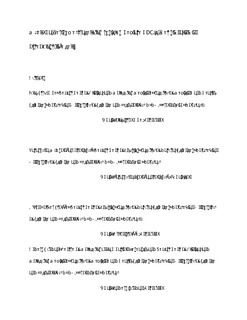| dc.contributor.author | Strømme, Olaf | |
| dc.contributor.author | Psonka Antonczyk, Katarzyna Maria | |
| dc.contributor.author | Stokke, Bjørn Torger | |
| dc.contributor.author | Sundan, Anders | |
| dc.contributor.author | Arum, Carl-Jørgen | |
| dc.contributor.author | Brede, Gaute | |
| dc.date.accessioned | 2020-03-05T12:15:13Z | |
| dc.date.available | 2020-03-05T12:15:13Z | |
| dc.date.created | 2019-09-14T12:52:26Z | |
| dc.date.issued | 2019 | |
| dc.identifier.citation | Experimental Cell Research. 2019, 383 (1), . | nb_NO |
| dc.identifier.issn | 0014-4827 | |
| dc.identifier.uri | http://hdl.handle.net/11250/2645485 | |
| dc.description.abstract | Multiple myeloma is an incurable cancer of antibody-producing plasma cells. Hepatocyte growth factor (HGF), a cytokine aberrantly expressed in half of myeloma patients, is involved in myeloma pathogenesis by enhancing myeloma growth and invasiveness, and may play a role in myeloma bone disease by inhibiting osteoblastogenesis. In this study, we investigated whether extracellular vesicles (EVs) may play a role in HGF signaling between myeloma cells and osteoblast-like target cells. EVs from the HGF-positive cell line JJN-3 and the HGF-negative cell line INA-6, and from bone marrow plasma and primary human myeloma cells, were isolated using sequential centrifugation techniques and the presence of HGF on the EV-surface was investigated with ELISA. EVs from both cell lines were added to an established bioassay where HGF is known to induce interleukin-11 secretion in osteoblast-like cells. Our results show that HGF was bound to the surface of JJN-3-derived EVs, while INA-6-derived EVs were negative for HGF. Only JJN-3-derived EVs induced IL-11 secretion in osteoblast-like recipient cells. When osteoblast-like cells were preincubated with a specific HGF-receptor (c-Met) inhibitor, no induction of interleukin-11 was observed. Downstream c-Met phosphorylation was demonstrated by immunoblotting. EVs isolated from bone marrow plasma and primary myeloma cells were HGF-positive for a subset of myeloma patients. Taken together, this work shows for the first time that HGF bound on the surface of myeloma-derived EVs can effectuate HGF/c-Met signaling in osteoblast-like cells. Myeloma-derived EVs may play a role in myeloma bone disease by induction of the osteoclast-activating cytokine interleukin-11 in osteoblasts. | nb_NO |
| dc.language.iso | eng | nb_NO |
| dc.publisher | Elsevier | nb_NO |
| dc.rights | Attribution-NonCommercial-NoDerivatives 4.0 Internasjonal | * |
| dc.rights.uri | http://creativecommons.org/licenses/by-nc-nd/4.0/deed.no | * |
| dc.title | Myeloma-derived extracellular vesicles mediate HGF/c-Met signaling in osteoblast-like cells | nb_NO |
| dc.type | Journal article | nb_NO |
| dc.type | Peer reviewed | nb_NO |
| dc.description.version | acceptedVersion | nb_NO |
| dc.source.pagenumber | 8 | nb_NO |
| dc.source.volume | 383 | nb_NO |
| dc.source.journal | Experimental Cell Research | nb_NO |
| dc.source.issue | 1 | nb_NO |
| dc.identifier.doi | 10.1016/j.yexcr.2019.07.003 | |
| dc.identifier.cristin | 1724678 | |
| dc.description.localcode | © 2019. This is the authors’ accepted and refereed manuscript to the article. Locked until 5.7.2020 due to copyright restrictions. This manuscript version is made available under the CC-BY-NC-ND 4.0 license http://creativecommons.org/licenses/by-nc-nd/4.0/ | nb_NO |
| cristin.unitcode | 194,65,15,0 | |
| cristin.unitcode | 194,66,20,0 | |
| cristin.unitcode | 1920,2,0,0 | |
| cristin.unitname | Institutt for klinisk og molekylær medisin | |
| cristin.unitname | Institutt for fysikk | |
| cristin.unitname | Kirurgisk klinikk | |
| cristin.ispublished | true | |
| cristin.fulltext | postprint | |
| cristin.qualitycode | 1 | |

